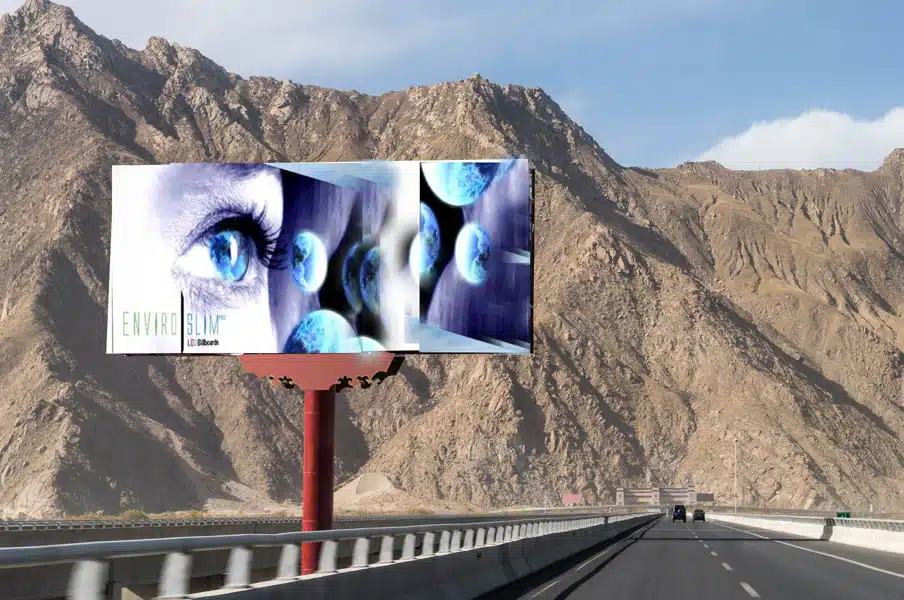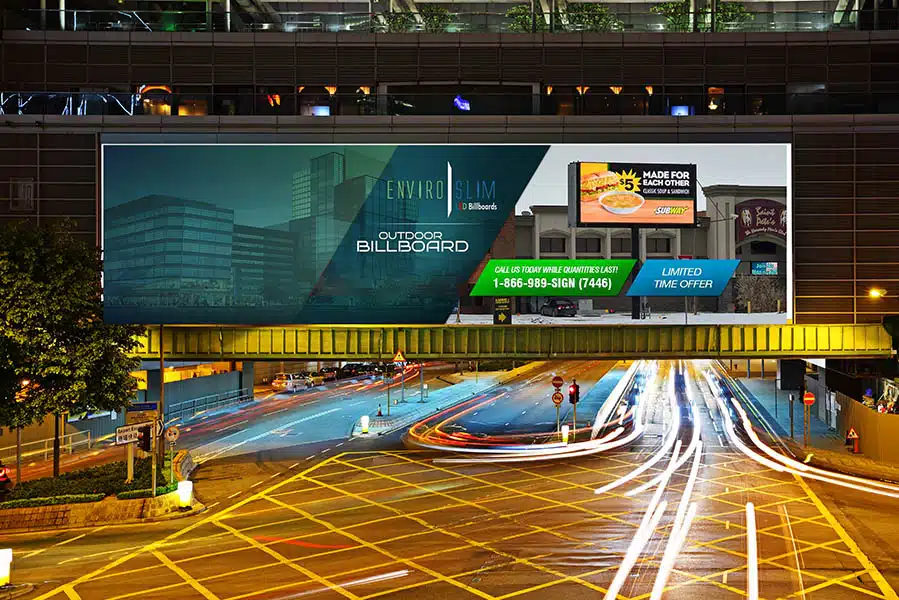Outdoor LED signage stands out as a cutting-edge, practical approach to grab people’s attention and deliver messages in real time in the ever-evolving world of communication and advertising. These colorful displays, which cover businesses, highways, and public areas, are now commonplace throughout cities. Let’s take a closer look at this fascinating technology by defining outdoor LED signs, examining their parts, and explaining how they operate.
Outdoor LED signs: what are they?
Outdoor LED signs are digital displays that project vibrant images, text, and videos into outdoor spaces using light-emitting diodes (LEDs). LED signs are a flexible option for outdoor advertising because they can function in many weather situations and can easily update material, unlike traditional billboards or signage. Even in bright sunshine, they are incredibly apparent thanks to their brightness and dynamic content capacity.
Outdoor LED signs provide businesses the benefit of enhanced visibility and customer attraction through their bright, dynamic displays, customizable content, and cost-effective, eco-friendly features, making them a strategic investment for superior marketing and branding efforts.

The Operation of Outdoor LED Signs
Content development utilizing specialized software is the first step in the operation of an outdoor LED sign. After the content has been planned and created, it is delivered to the controller, which decodes the information and signals the LED modules with the information they should display.
Red, green, and blue LEDs in a module can all produce a variety of colors by varying in intensity. Millions of colors can be created through a technique called color mixing. The entire image or message on the sign is formed by the total output of all the LEDs.
An essential component of outdoor LED signs is brightness, particularly for daytime visibility. The controller makes sure the sign is always readable without being overly bright at night by adjusting the brightness dependent on the time of day or the surrounding surroundings.

Advantages of Outdoor LED Signs
Outdoor LED signs offer several advantages over traditional signage, including:
Dynamic Content: Messages can be updated to reflect sales, events, or essential information without the need for physical replacements because content can be changed remotely and instantly.
Energy Efficiency: LED signs are an energy-efficient choice because of their reduced power usage as compared to conventional light bulbs.
Longevity: Before needing to be replaced, LED lights can often endure tens of thousands of hours. Over time, this resilience makes outdoor LED signs an affordable option.
High Visibility: LED signs are more effective as a communication tool because of their brightness and contrast, which make them readable in all lighting circumstances.
Navigating the regulatory landscape for outdoor LED signs is crucial for legal compliance, community relations, and public safety, requiring a thorough understanding and adherence to local zoning and legal regulations to ensure that these dynamic displays serve as a responsible and effective advertising tool. Companies must stay informed about regulatory changes and engage with their communities to maintain compliance and optimize their signage strategies. LED billboards distinguish themselves from traditional billboards by their high visibility, reduced maintenance needs, and dynamic content capabilities.
Components of Outdoor LED Signs
To understand how outdoor LED signs function, it’s essential to break down their main components:
LED Modules: The central component of an LED sign, these modules are made up of several LED lights grouped in a grid pattern. Different colors and brightness levels can be exhibited by each module, adding to the final image or message that is presented.
Cabinet: This cabinet keeps the LED modules out of the weather and stores them. The longevity of the LED sign is guaranteed by the cabinets’ robust and weatherproof design.
Controller: The controller is the operation’s central nervous system. It controls the timing, brightness, and transition effects between images and messages in the material that is shown on the LED sign.
Power Source: To light the LEDs, outdoor LED signage need a steady supply of power. Incoming power is transformed by the power supply unit into the low voltage needed by the LEDs.
Software: The content that is shown on the LED signage is created and scheduled using specialized software. With the help of this software, customers may create personalized messages, select colors, and adjust display timings.
Proper maintenance and care are essential for the longevity and optimal performance of outdoor LED signs, involving regular cleaning, ensuring proper ventilation, checking electrical connections, and protecting against weather conditions.


Revolutionizing Public Engagement: The Impact of Outdoor LED Signs
The way businesses and communities interact with the public has advanced significantly with outdoor LED signs. Users may make the most of these signs’ ability to draw attention, deliver messages, and stand out in the urban scene by being aware of their parts and how they operate. The potential and uses of outdoor LED signage are only going to grow as technology develops further, providing even more creative means of educating and entertaining. Outdoor LED signs represent a significant advancement in the way businesses and communities communicate with the public. By understanding the components and workings of these signs, users can leverage their full potential to capture attention, convey messages, and stand out in the urban landscape. As technology continues to evolve, the capabilities and applications of outdoor LED signs are set to expand, offering even more innovative ways to engage and inform.
For quick access to more information, support or a quote on LED outdoor digital signs, please contact us, today.




